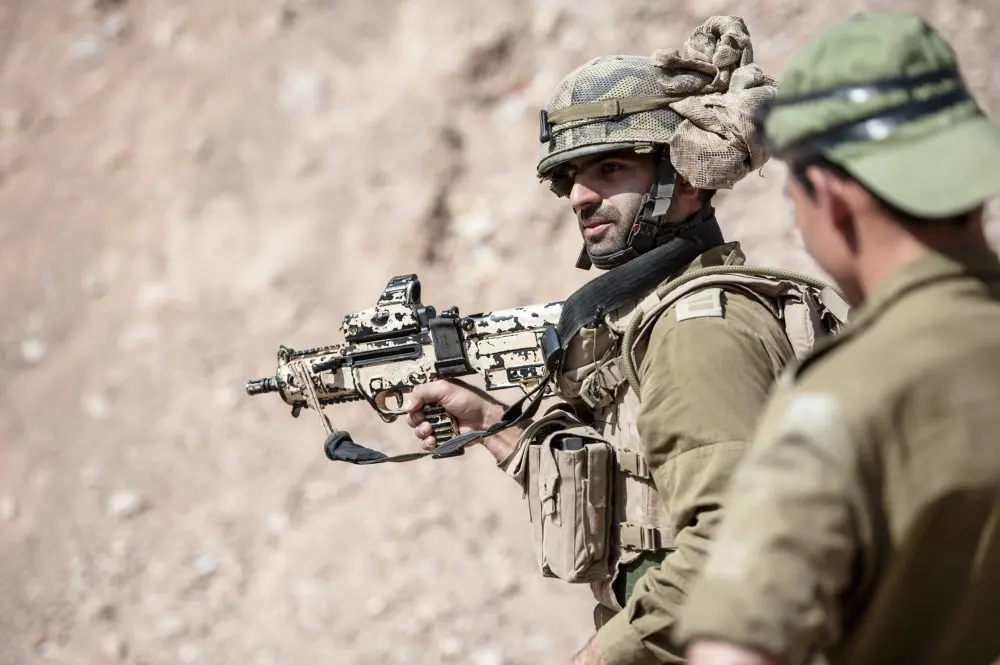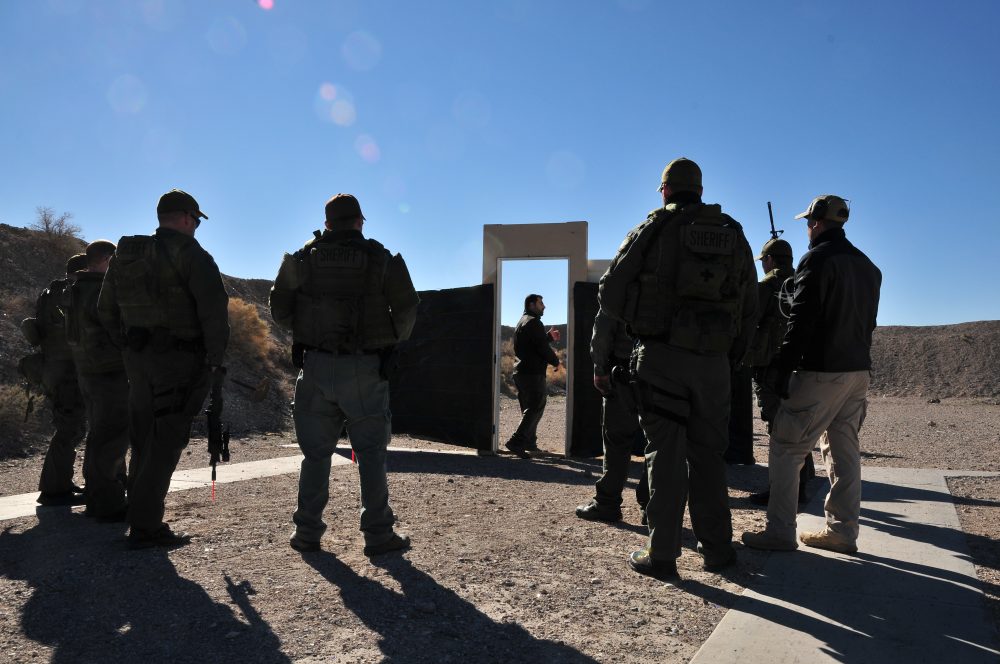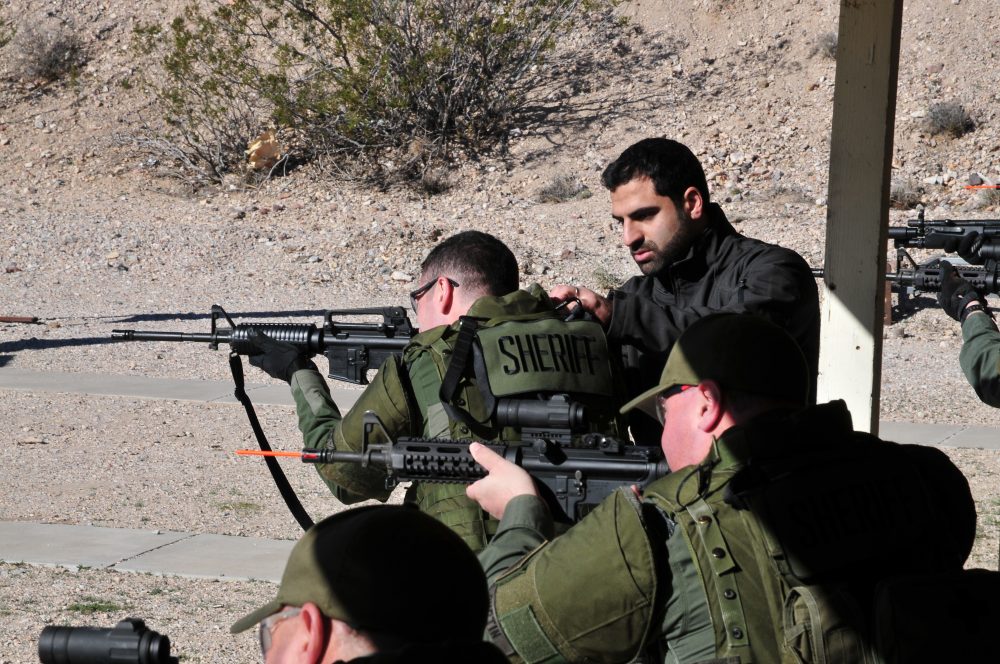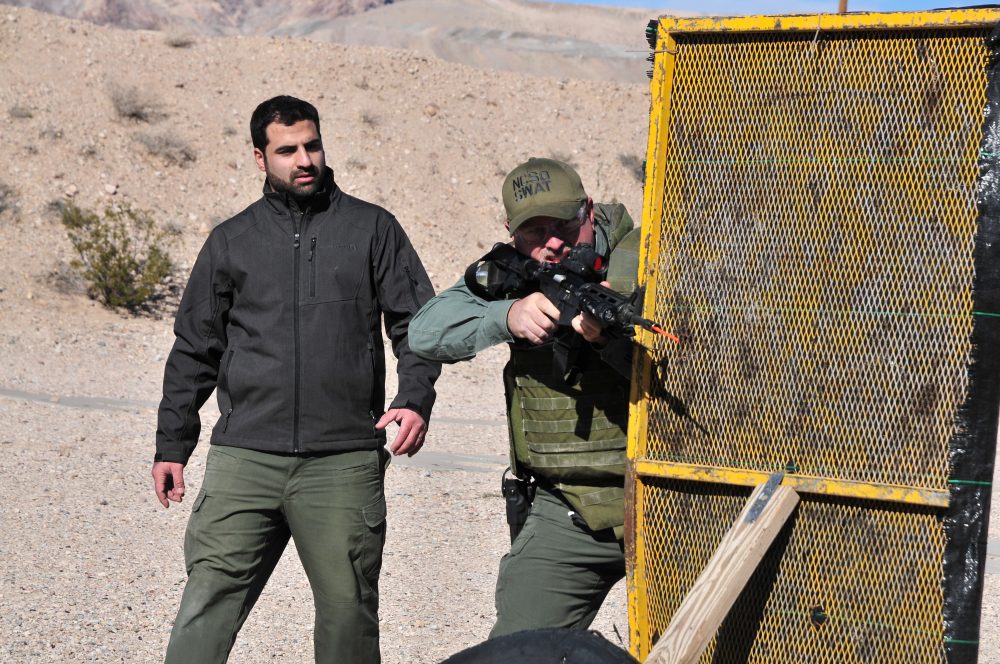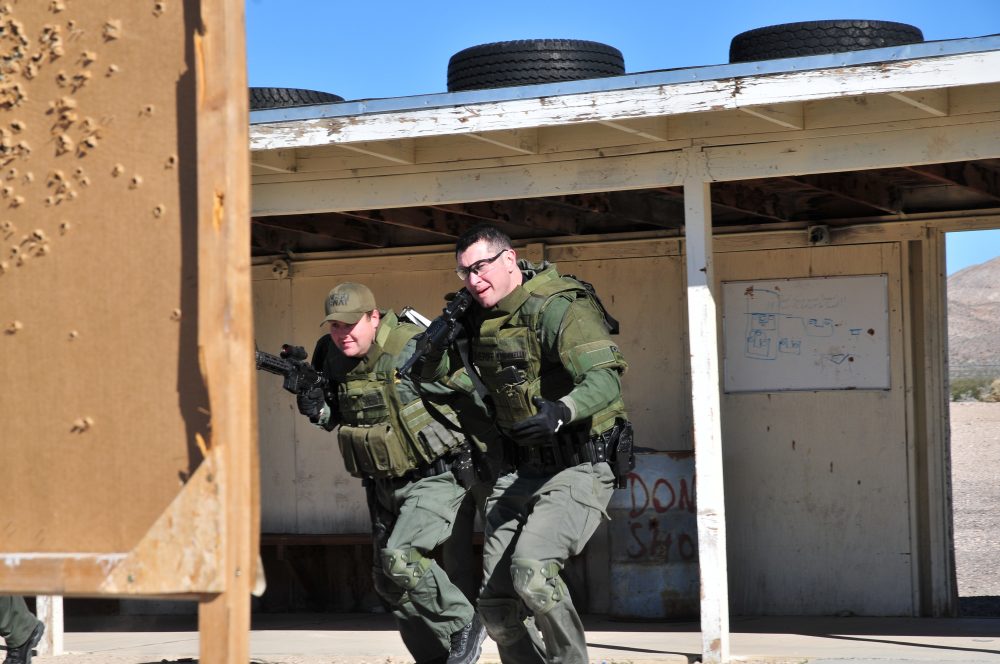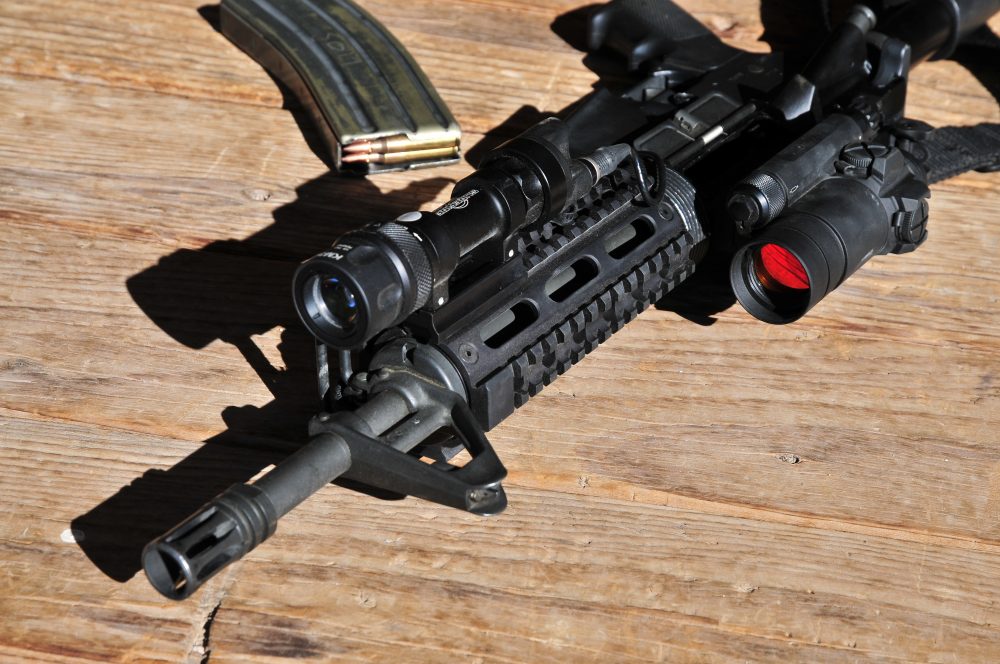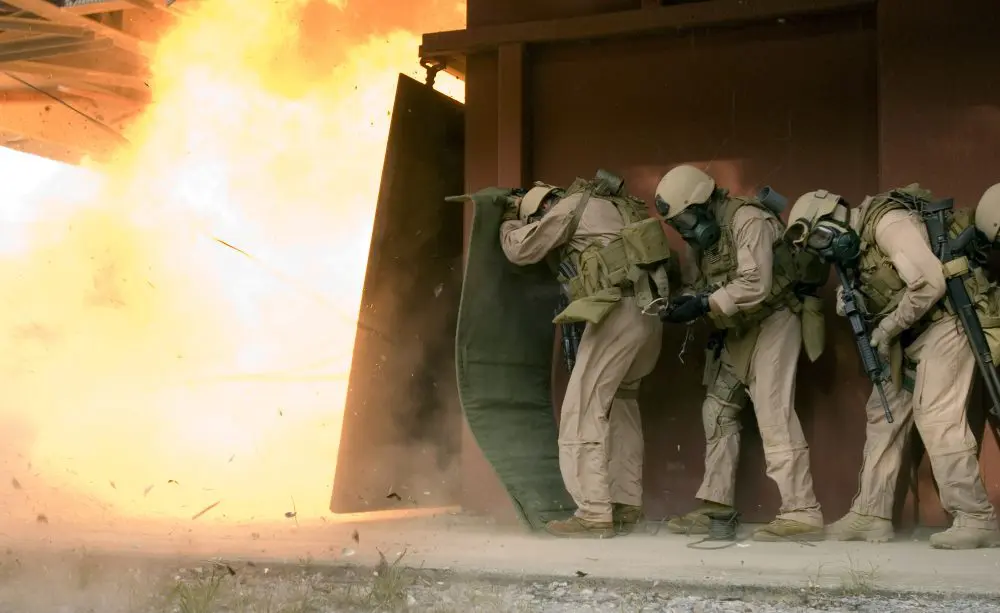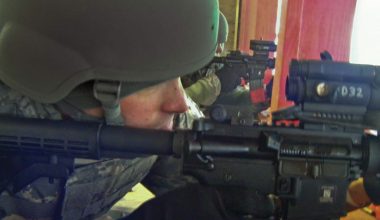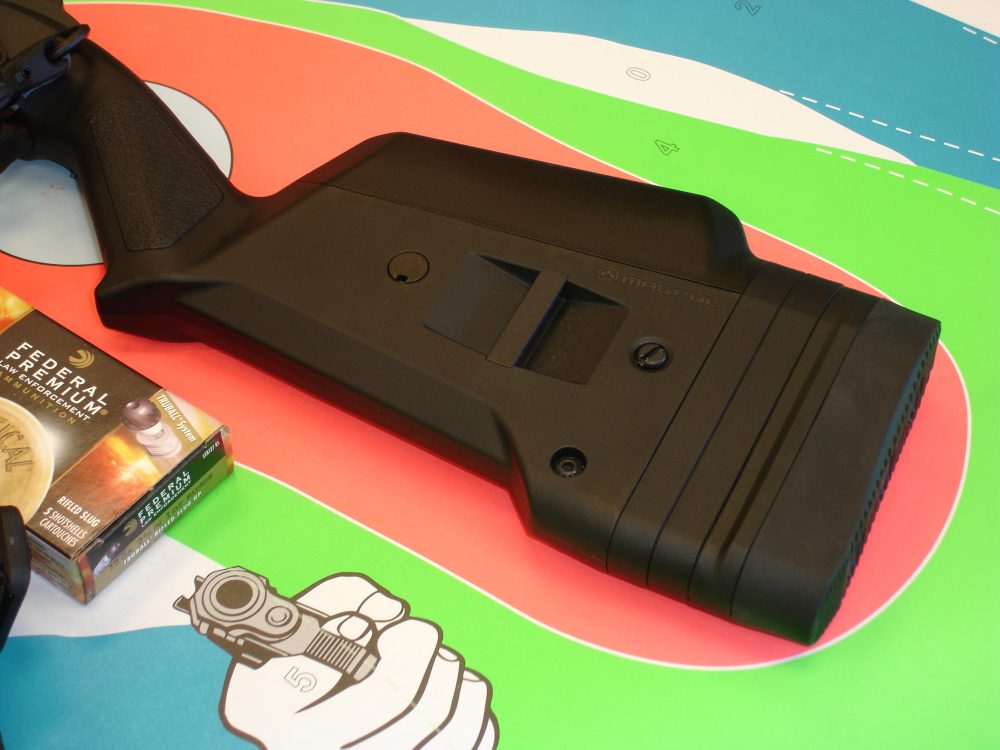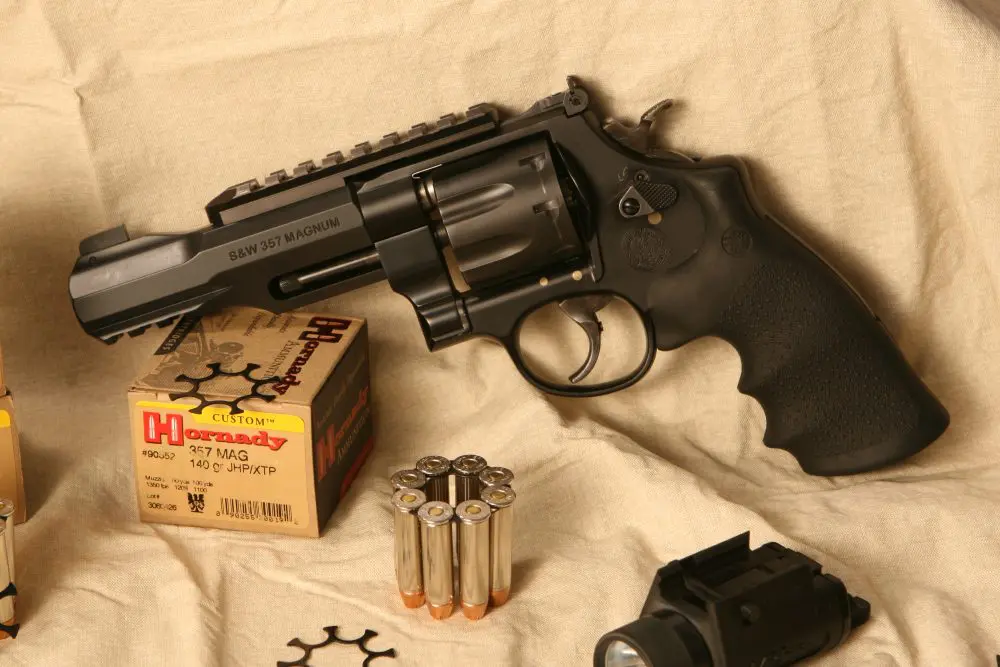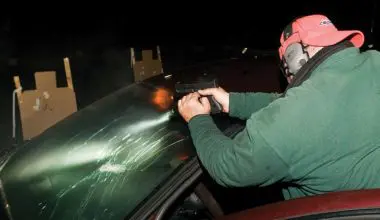Agoge lead instructor Ivgi was part of study group that improved tunnel-fighting tactics. He also worked in Tanzania training park rangers to fight poachers. Ivgi now lives in the U.S. but remains in IDF reserves.
Everyone in law enforcement knows that active-shooter tactics changed dramatically after the Columbine High School shootings of 1999. Less well known is how lessons learned during 2009’s tunnel fighting under Gaza forced Israelis to adapt. A special unit was established to study fighting in the sprawling labyrinth of newly constructed tunnels under the notorious Gaza Strip.
As Jihadis continue to build and fight from literally thousands of smuggling and tactical tunnels, these operations continue, with Operation Pillar of Defense and Protective Edge in 2014 and frequent small, unreported fights even as this is written.
Fighting in confined darkness against an enemy of unknown numbers and skill levels—on their turf—demanded a complete re-evaluation of all existing techniques. The specter of hidden panels concealing squads hoping to be bypassed, the physical effects of fighting underground, the difficulty of engaging the enemy with fleeing civilians blocking fields of fire, and the absolute necessity for violently aggressive action were all addressed.
One member of this Desert Commando subunit, Ivgi (last name deleted for publication), has come to the U.S. and teamed up with a Marine, Riley Hunt, who had taken his course in Israel. Both men are now reservists, and together they have formed Agoge Corporate Services, named after the warrior school of ancient Sparta.
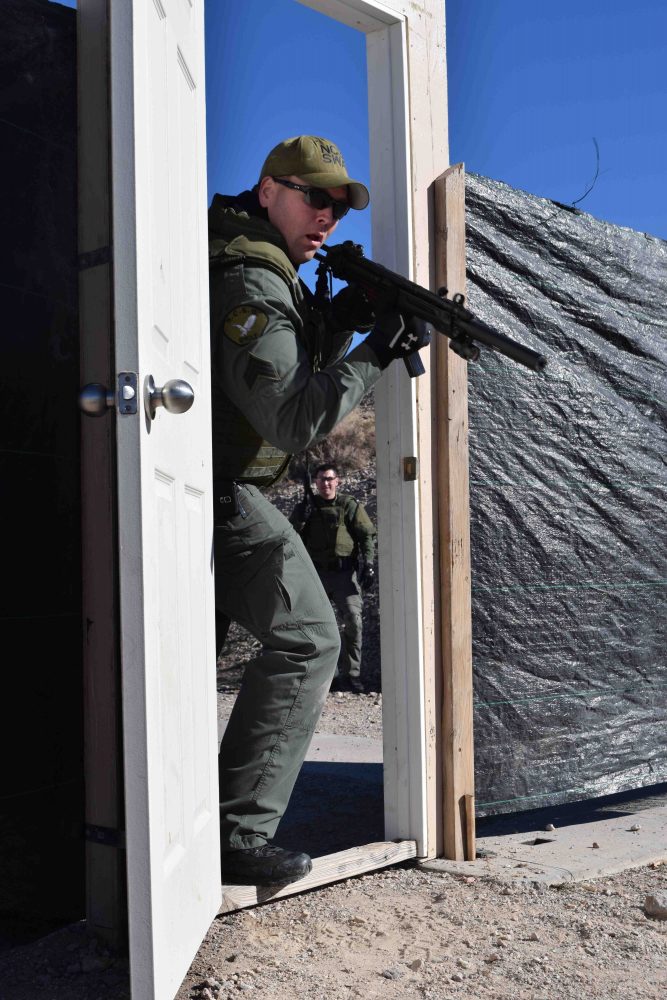
Table of Contents
AGOGE CORPORATE SERVICES
Agoge offers training to American law enforcement agencies and civilian contractors. It’s small, the classes are easily digestible, and the instruction is devoid of formal presentation. Agoge accepts classes of six to 12 students only. This maximizes teacher-student time, and Ivgi’s fast-moving, hands-on approach is especially tailored to smaller agencies—those that don’t have the facilities or budgets for more set-piece school scenarios but want first-rate training in state-of-the-art techniques.
Ivgi is quick to point out that Agoge training is not lifted straight out of the Israeli textbook, but rather is a blend of U.S. and Israeli techniques tailored to law enforcement as well as military requirements.
TRAINING DAY
Late fall 2015. I arrived just after dawn at the Silver State Range across from the ghost town of Rhyolite and west of the remote town of Beatty, Nevada. It was Saturday and snowing with an inch on the ground.
Riley Hunt and Ivgi were already there, assembling barriers, doors and targets. “We can’t put them up the day before, as it’s a public range. Local shooters will use the targets or local tweekers will take everything standing,” Hunt said.
Gun-writing photographer Tim Yan, a former Devil Dog, combat vet of Somalia, and our nation’s foremost authority on Chinese small arms, showed up to help with his camera.
The sky cleared and the sun quickly melted the snow as a convoy of assorted Sheriff’s Department vehicles, including a classic vintage SWAT vehicle, pulled in. Uniformed deputies dismounted and suited up.
Team Leader Sgt. James McRae conferred with Ivgi and Hunt, and the range safety officer, “Hollywood” Fancher, was identified. Following Fancher’s safety brief, a line was formed for position drills. Keeping balance is extremely important when fighting in complete darkness. If a comrade stumbles into you when you’re engaged, you have to shuffle-step to stay upright—without coming out of battery. A distant explosion can knock you over if you’re not constantly alert and able to shuffle backward.
During demonstration phase, Agoge instructor Ivgi walks each deputy through his actions. Rapid pace of instruction maintains student attention.
Ivgi demonstrated a technique for pivoting in the kneeling position that had everyone scratching their heads, thinking, “Damn, that makes sense. Why didn’t I think of that?” Then he showed how one assaulter in the kneeling could pivot around another in the off-hand position so they effectively cover each other’s backs. In this manner, two men can occupy almost as little corridor space as one, and pivot to cover a passageway junction.
Ivgi rapidly drove the deputies using the classic military “explanation, demonstration, application” system, but with heavy emphasis on demonstration and application. The burly Israeli’s speed of instruction kept all deputies focused and enthusiastic. Riley answered questions for deputies when Ivgi’s English, although excellent, hit an obstacle.
DRILLS
Drills focused on shooting five-shot series. “The first shot is aimed, the other four are fired using your body rhythm.” Several deputies were visibly skeptical. Ivgi quickly selected a deputy and went one-on-one instructor mode to prove that shooting at exact intervals between shots produces very impressive groups but maintains enough practical dispersal to share hate throughout the variety meat section of the perp’s torso.
Deputies conducted dry-fire drills, with Ivgi occasionally slapping muzzles to remind shooters to keep the rifle firmly in the shoulder. Then deputies went live on ten-yard targets.
During the sustained four-hour class, no break time was declared. The class members were fully engaged in the half-day training evolution and made head calls in between drills and loading magazines.
Balance and weapon retention are key ingredients in maintaining combat advantage in confined fighting quarters. Deputy’s rifle stock location is adjusted during dry drills.
Instruction was given on how to move through fleeing civilians and how to shoot safely while doing so. Then officers did dry drills. There is no litigation-proof safe way to practice this with live ammo.
The final drills were of entering and clearing rooms occupied by obstacles and bad guys. Everything centered on speed of action. Cursory checks and lightning reflexes, moving through as quickly as possible so as not to allow the fleeing enemy a chance to collect their wits or take up a concealed or protected firing position.
In the tunnels of Gaza, Israeli infantry often found out the hard way that downed combatants would lie there until the assaulting unit had passed over them, then attack from the rear or disappear into a concealed side tunnel to escape and fight another day.
One big subject not taught is the use of anchoring shots. It’s simply not done in America. You only yell “Clear!” when the threat is down and secured away from weapons. After the subject is secured, EMTs can be brought up or the secured perp transported to medical care. This may be a weak point when involved in an active-shooter situation and may at some future time be remedied by less-lethal technology.
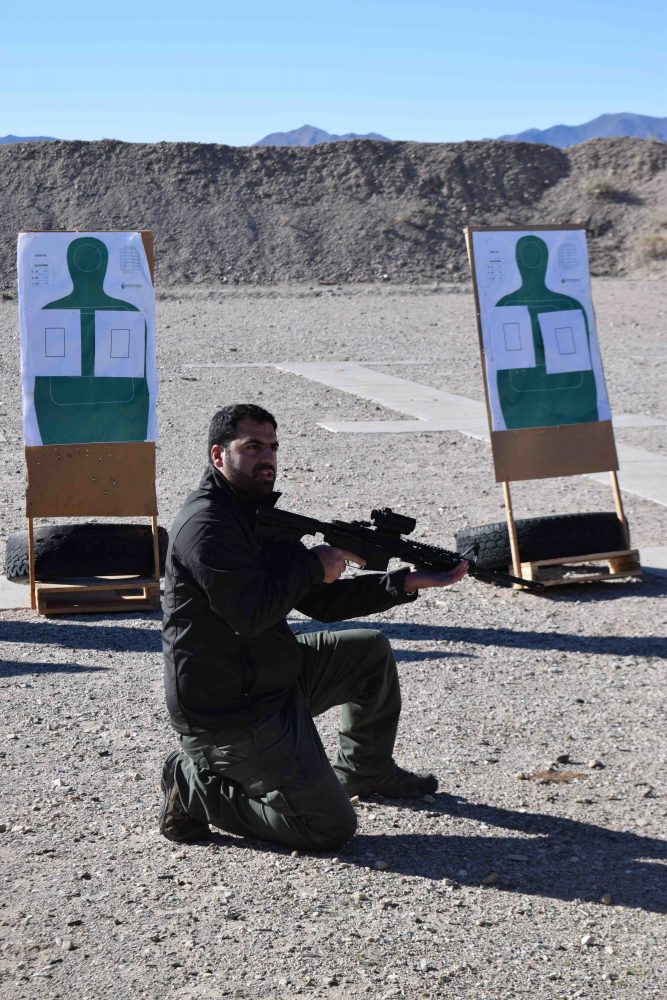
PERSONAL INSTRUCTION
Throughout the training day, Ivgi would connect with individual deputies, coaching them on small techniques to increase reaction time. Israelis practice using a stutter-step in all movements, to avoid tripping on uncertain footing. Ivgi explained, “One foot chases the other.”
One issue discussed was the importance of speed and fire over precision and position. As Ivgi put it, “You can face a new direction and position your feet. But you lose one second in positioning your feet. In that one second, you could fire five more shots. Maybe not perfect shots, but good-enough shots.”
An odd emphasis caught my attention. After every five-shot semiautomatic series (Israelis avoid full-auto bursts like pork), Ivgi called out for making a quick visual check of the bolt, to make sure it had fully closed and locked before moving. Nothing louder than a “Click!” when you need a “Bang!” Agoge teaches continuing to fire in series until the threat is hit or you can’t see the target any more.
NYE COUNTY SWAT
“The Kingdom of Nye” is the nation’s third-largest county and, at 18,000 square miles, this rugged desert is substantially larger than Switzerland. There are no incorporated areas, so the Nye County Sheriff’s office is the sole law enforcement agency. And with a tax base of less than 50,000 population, it’s severely under-funded.
To add a unique difficulty, the county seat, Tonopah, is over 200 miles from the population center, Pahrump. Yes, Pahrump—right out of Mars Attacks.
Deputy is walked through dry drill. Agoge accepts classes of between six and a dozen for maximum student/instructor ratio.
Nye’s SWAT team is an all-volunteer “Special Response” squad. Without compensation, they buy 90% of their own gear. The mishmash of long guns suggests they may be issued drug-seizure weapons. This forces the department to use lighter 5.56mm projectiles, as some of the SWAT ARs still have 1:12 twists. A variety of optics and lights were attached to the rifles in the usual positions.
The office just transitioned from 9mm handguns to .357 SIG and everyone is happy with it.
Most of these working patrolmen’s web gear is ordered online and suited to their individual tastes. I was impressed with their professionalism and élan. These are clearly Western lawmen of the classic mold. They are used to working alone—often remotely—and of being authority in their own right. No backup but their wits, weapons and training.
“We were impressed with Agoge’s course outline. Israelis tend to adapt and improvise. We’re underfunded and we have to adapt and improvise as well, so it’s a good fit,” said Sgt. McRae, gesturing to the hastily crafted barriers, walls and doors.
The size of the unit varies between one and two dozen deputies and standards are high, with an emphasis on ability to maintain fine motor skills while recovering from cardio exertion.
Deputies conduct dry drill past barriers representing fleeing civilians in the way.
DEPUTIES’ QUALIFICATIONS
When I noted the agility of the deputies, Sgt. McRae explained part of the selection process and annual qualifications. “They have to be able to run and then disassemble and reassemble their service pistol in a prescribed time, then run another lap and shoot accurately with a revolver.” But there’s a twist: The barrel must be held inside a four-inch steel ring, and the barrel can’t touch the ring during firing.
Other requirements involve using flights of stairs. It was apparent that morale among these far-flung protectors was first-rate. Their banter was the same as you’d witness in any gathering of young, well-trained warriors.
It was explained to me that one deputy’s nickname was “Low Jack” because nobody could keep track of his location, and that Corporal “Hollywood” Fancher was called such because he’d once been a performing “knight” in Las Vegas—at the Excalibur Hotel’s Tournament of Kings.
Variety of ARs was impressive, with different barrel lengths, weights and twists. This one sports an Aimpoint CompM4 and SureFire light.
Of the team as it was on that cold day, eight men were military veterans and two had seen combat. Most will probably see action in the course of their duties in Nye County.
The county has many remote dwellings just several hours from Reno and Las Vegas, all perfectly situated for the cooking of methamphetamine. Criminal tweekers are everywhere. Plus, Highway 95 runs right through the length of their jurisdiction, a conduit for the drug trade between the state’s two pleasure domes.
Nye County deputies need to be highly trained and mentally and physically tough to work in this unforgiving environment. Agoge’s training is fast and furious. The two were a good match, and I was honored to be an observer at this class and share the experience with S.W.A.T. readers. Would your department benefit from training with Agoge?
WHO IS AGOGE?
This young company has existed since early 2014, the creation of two veterans who met by chance in 2007. Riley Hunt, 30, grew up in tiny Beatty, Nevada. Joining the Marine Corps Reserve right out of high school, he deployed overseas several times, including Iraq in 2009. He met Ivgi when he attended an Israeli school. Hunt is currently a Staff Sergeant with Fox 2/23.
On the civilian side, Hunt continues to serve his community as a Nevada State trooper, being sworn in in 2008. Among his yearly challenges is monitoring the sometimes-alarming driving habits of the large community of foreign automotive technicians, as a score or more car companies populate the town of Beatty for summer hot-weather testing. Agoge is a sideline for Hunt. He functions as the front man and ombudsman.
Ivgi, 30, immigrated to Las Vegas and is working full-time to make Agoge into a go-to tactical training outfit for lawmen and civilian contractors, offering aggressive training for active-shooter situations and other tactical specialties.
Ivgi was conscripted into the Israel Defense Forces at 18 and later commissioned as a Desert Commando. He completed numerous schools, trained with international elite units, and has seen action in every conflict since 2004, including Operation Protective Edge in 2014.
This was Israel’s campaign to destroy the elaborate tunnel network used by Jihadis who were launching rockets into Israel, and it successfully resulted in the destruction of 34 tunnels. Ivgi remains in the IDF reserves with the billet of platoon commander.
SOURCE
AGOGE CORPORATE SERVICES
(702) 423-9583
www.agogecorporate.com
